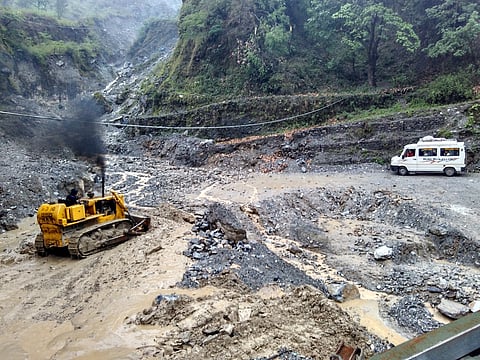Chipko to climate change
The Himalaya is geologically alive. Following decades of research, geologists are now credibly able to explain how the 2400-kilometre long Himalayan mountain chain, with its soaring peaks, deep gorges and alpine glaciers, is a product of an ongoing orogeny – the continual thrust of the Indian Plate into the Eurasian Plate. While histories of human settlement and livelihoods in such dynamic mountainous environments have always been precarious, the impacts of climate change have sparked fresh fears, particularly with the realisation that erratic rainfall and temperature fluctuations can aggravate geomorphological processes such as floods, soil erosion and landslides. Not unsurprisingly, this discernible spike in environmental volatility has led many to speculate that a reckoning may be in the offing over the fraught relationship between environmentalism and developmental politics in the region. A case in point is Uttarakhand, the mountainous Himalayan state located in North India, which witnessed three disaster episodes in the last decade alone.
In mid-June 2013, the district of Rudraprayag was pummelled by a sudden cloudburst, which set off a chain of landslides that impacted surrounding districts, including Pithoragarh, Uttarkashi and Dehradun, among others. The cloudburst drowned the pilgrimage site of Kedarnath and turned the Mandakini and Alaknanda rivers into raging torrents. The official death toll of close to 6000 people largely comprised tourists and pilgrims. On 7 February 2021, a 'hanging glacier' broke off from the steep slopes of the Nanda Ghunti mountain in the Chamoli district and emptied into a tributary of the Rishi Ganga. The ensuing flood swept aside roads and smashed through a bridge as well as two hydroelectric power plants. Several construction workers were tragically added to the 72 confirmed deaths from the incident after watery sludge raced into the worksite tunnels at one of the hydroelectric projects, which was under construction. A few months later, on 23 April, another falling glacier set off an avalanche that killed eight people and critically injured six more in the Chamoli Garhwal district, while 384 people working on a road construction project at a Border Roads Organisation (BRO) camp had to be rescued.

